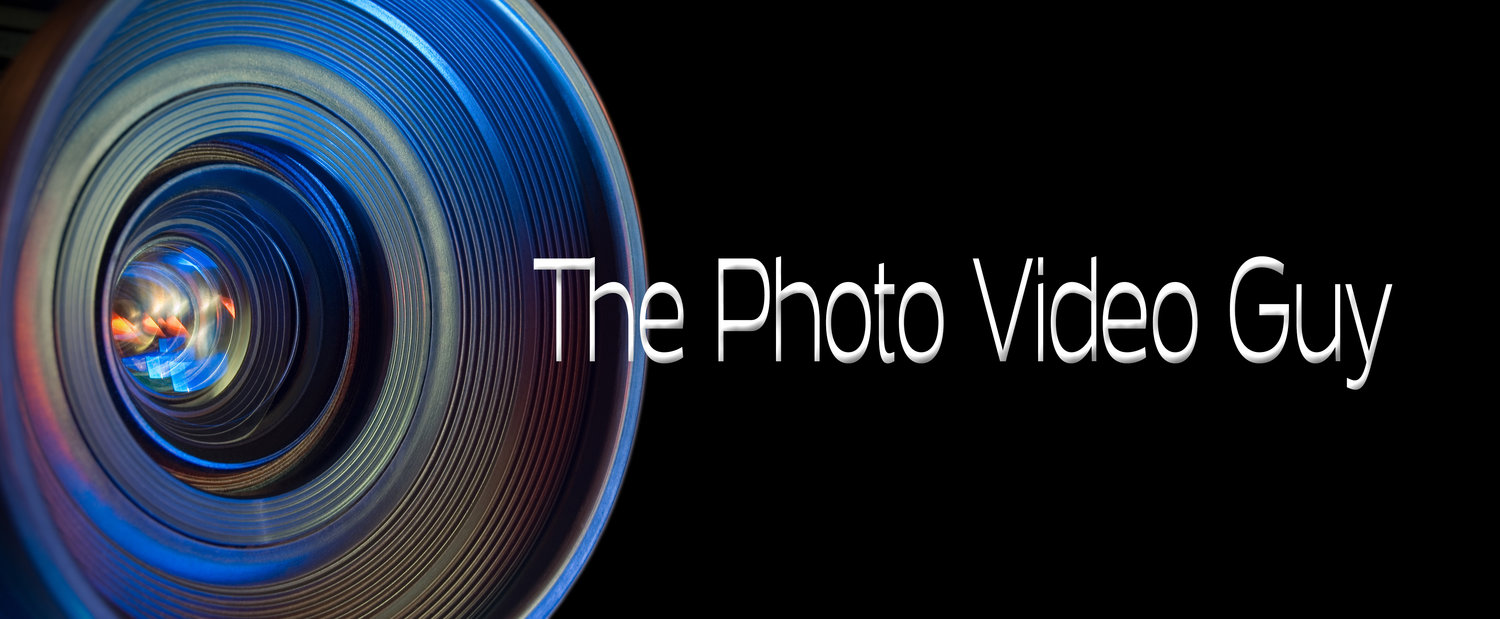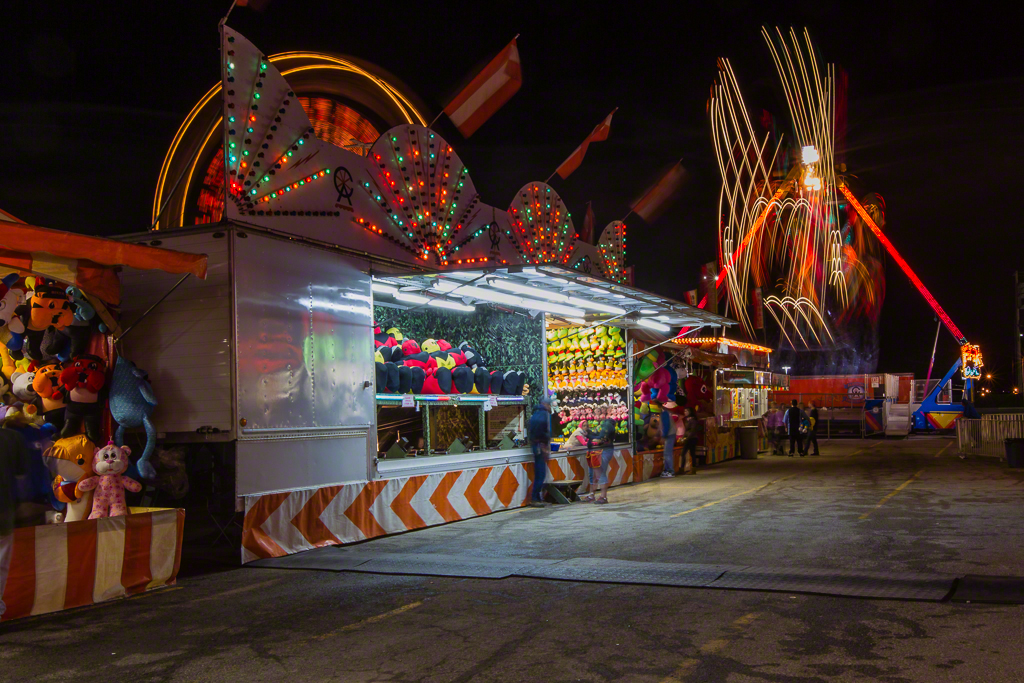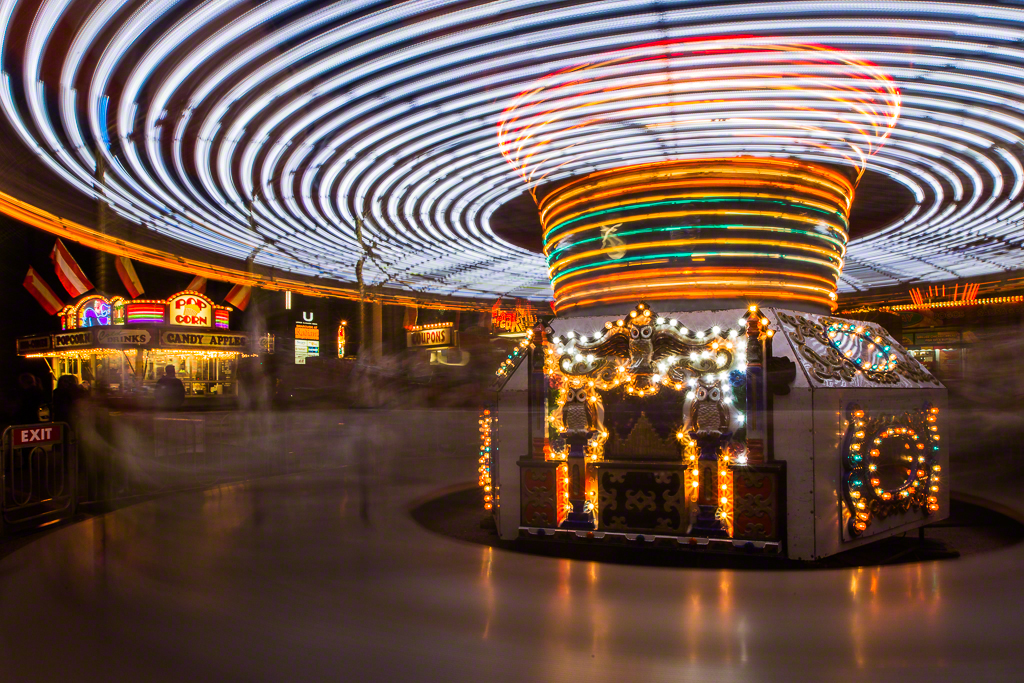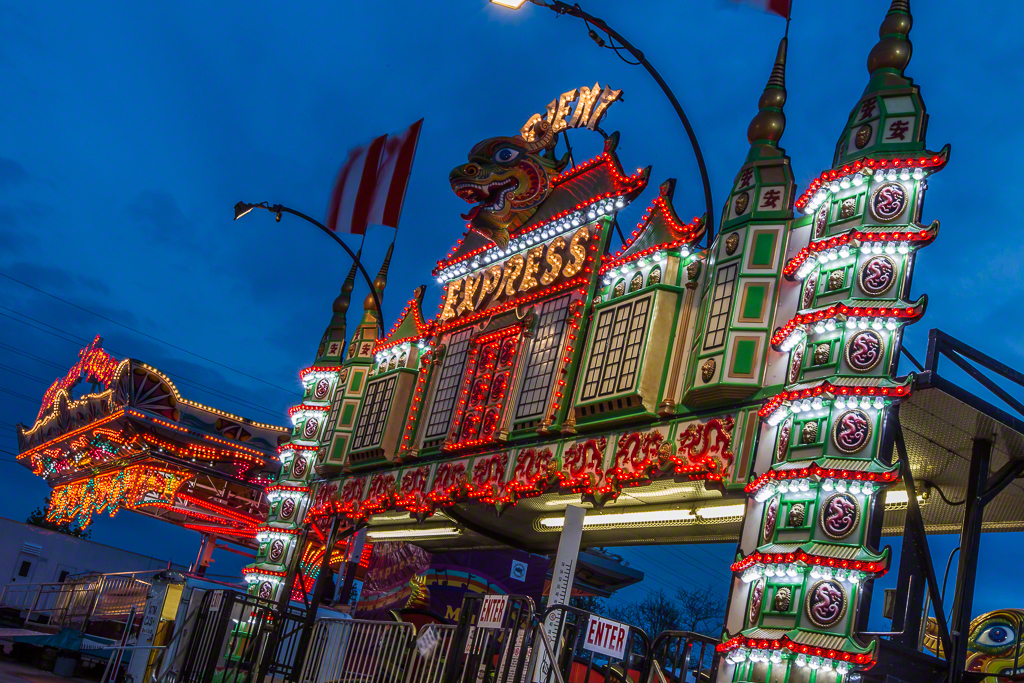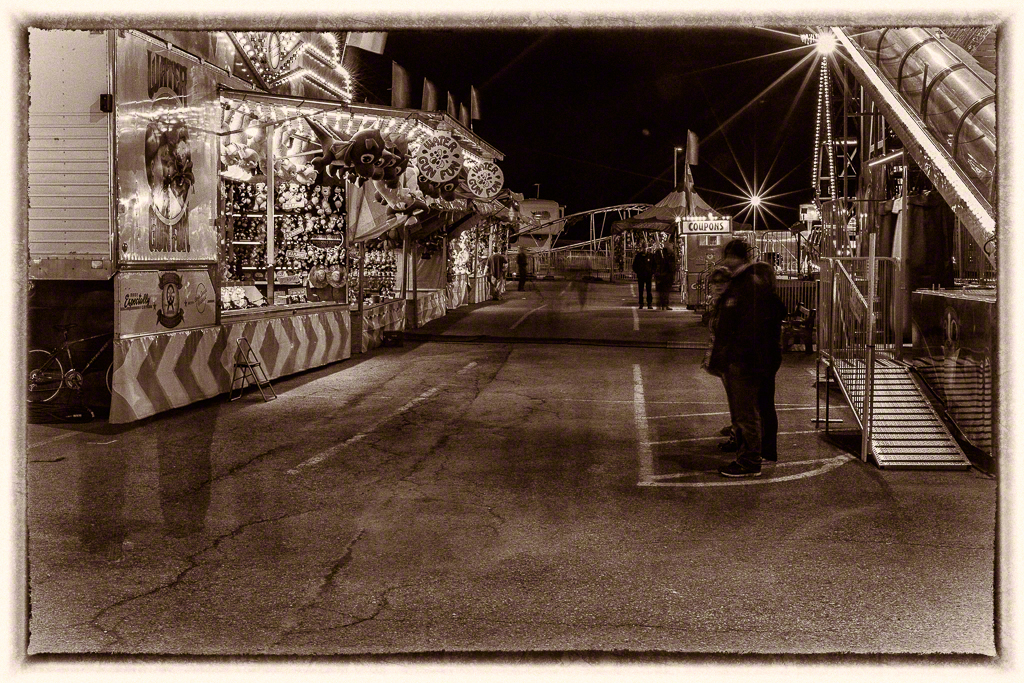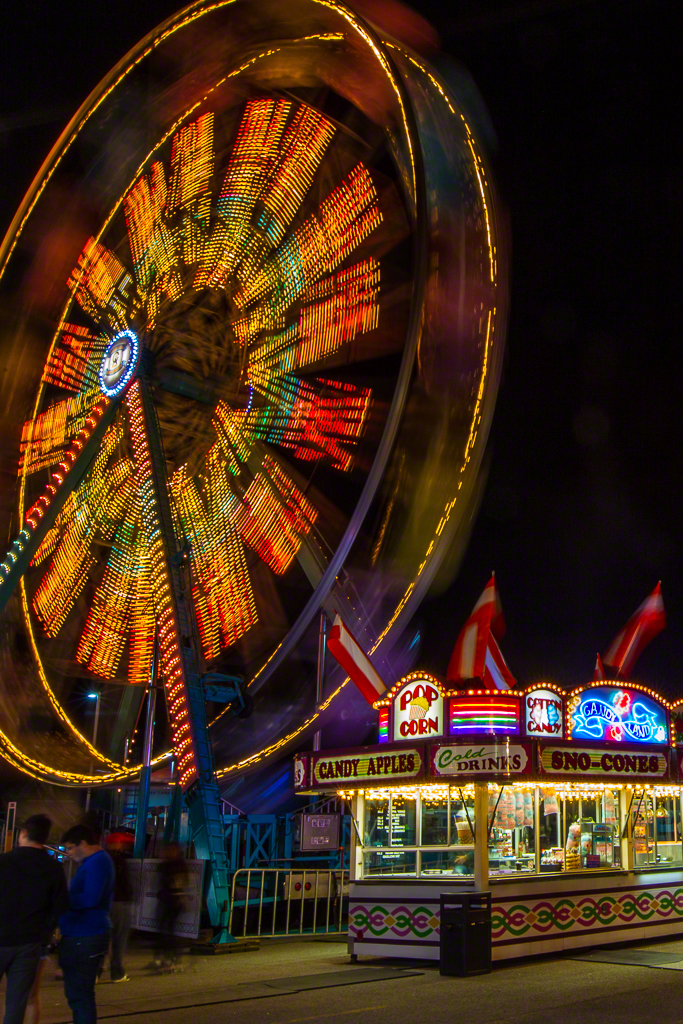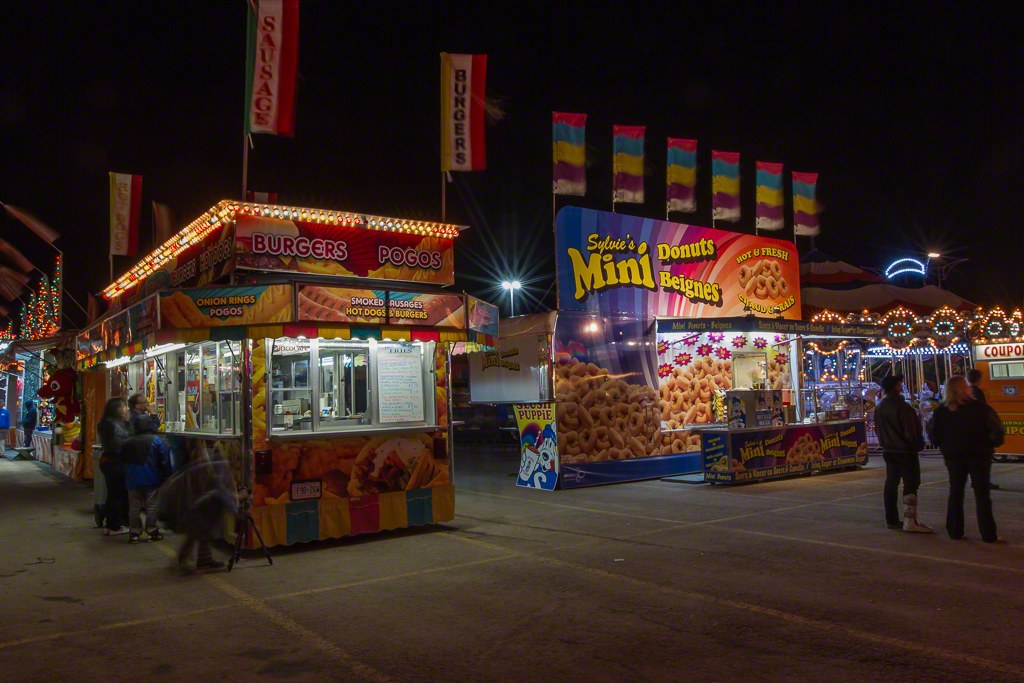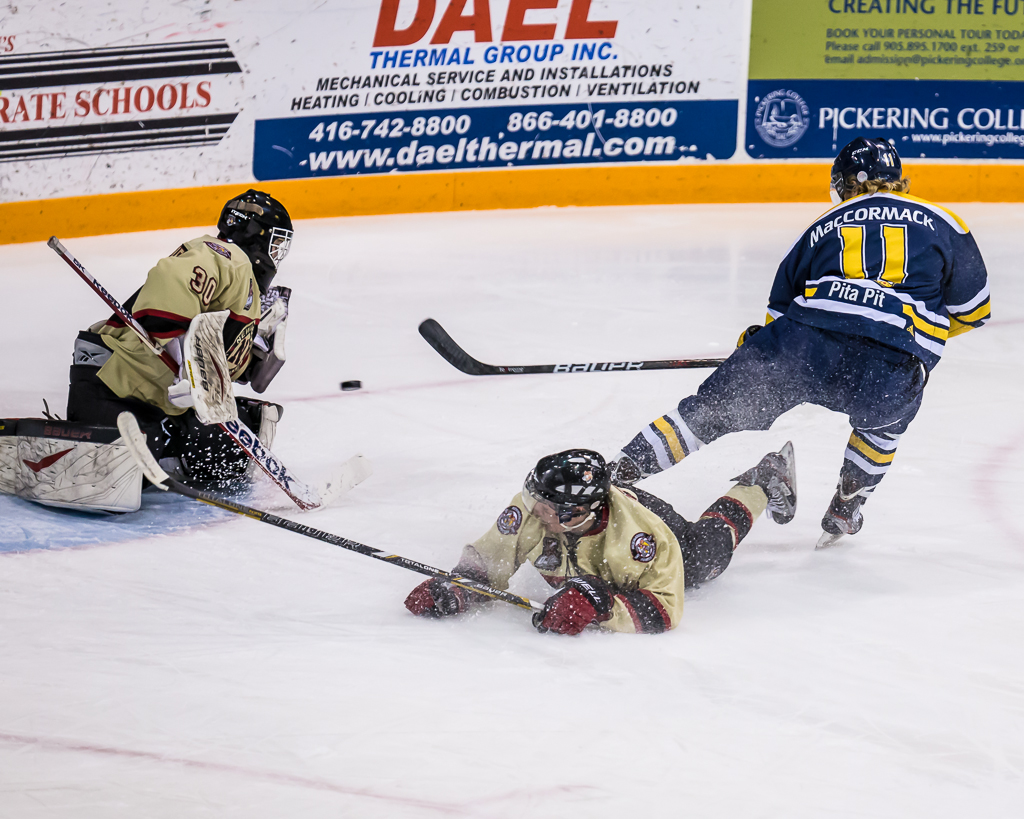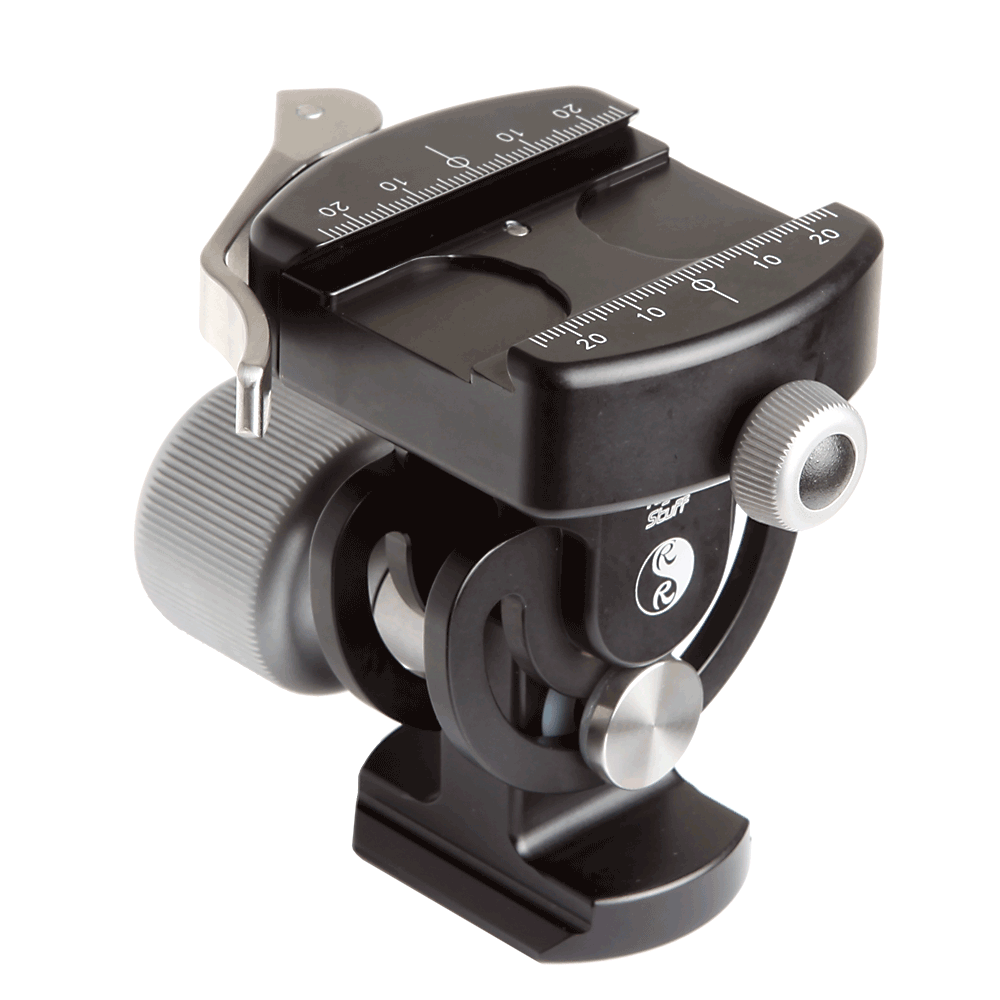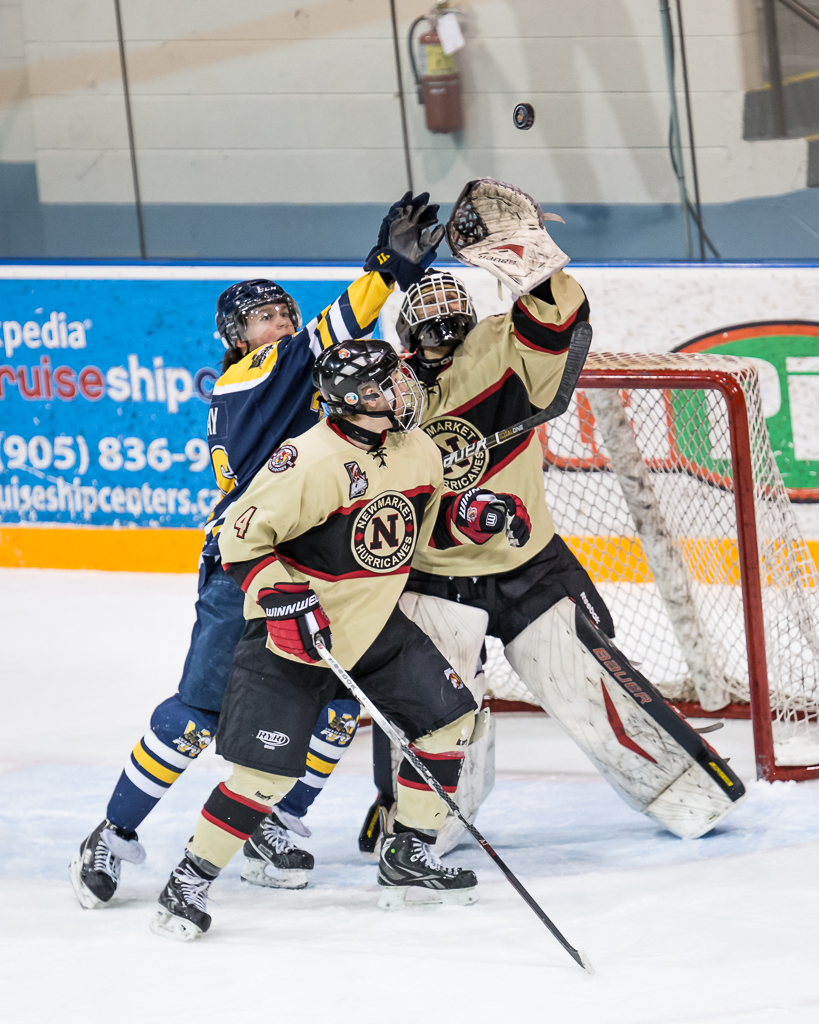The Travelling Carnival
/When I was growing up in small towns, the annual visit of the summer carnival was something to look forward to with excitement and fear. They would bring rides and neat treats, and scary images and animals and in the more distant past "freaks". Carnies are a very unique group of people and while things have tamed down a lot in nearly half a century, there's still a bit of magic and a lot of fun in the travelling carnival. This past weekend the show came to Newmarket, and while the weather was not good, given our endless winter, families and then later the teens came out to get out of the subdivisions and into a bit of fun and sparkle. The carnies have been struggling, you can tell, but they were all very pleased to see us photographing them, the other patrons were pleasant and even tried to avoid "crossing in front of the camera" to prevent a picture from being ruined. This was no issue since the primary goal was longer exposures and a ghosting quest.
I was lucky to have NCC member Isabel come with me, as a peer photographer, not a tag-along and she has self described and the fact that I have processed a couple of images as black and whites is due ENTIRELY to her inspiration.
The travelling carnival is a piece of the past that still exists in the face of always-on tech. I suppose it's because I am of the generation of Rush's Lakeside Park, that I love going to photograph them and it was very cool to have Iz laughing beside me. I do wish that the carnies were more commercially successful but it is what it is.
Since folks ask regularly about my workflow, it's pretty straightforward.
- Copy the images from the card to a hard drive
- Open them in Photo Mechanic and scan through the images employing judicious use of the DELETE key
- Import the remainder into Lightroom
- Apply the lens profile correction to all imported images
- Process as desired
- Export as 1024 pixels on the long side at 72dpi as high quality JPEGs
- Open the exported JPEGs in Photoshop and apply the Digimarc digital watermark filter to all the images
In this editing session, I used Lightroom 4.4 for all the core editing as I wanted the images in my regular catalog, not the LR 5 test catalog. The black and white conversions were done in Silver Efex Pro 2 (Ghosts in the Fair) and Perfect Black and White (Ageless). They are very different plugins but through competitive offers you can have the entire OnOne Perfect Photo Suite and the entire Nik Collection (until the Goog kills it) for about $300, money well spent.
All my images were shot on a Canon 1D Mark IV using a Canon 16-35/2.8L lens mounted on a Really Right Stuff tripod and ball head. I did try using a Hahnel remote but being powered it kept turning itself off so I just went with the 2s self timer in the camera. All exposures were in manual mode using experience as a guide for the first frame and then moving around based on what I saw.
If you have one of these travelling carnivals come to your town, take advantage to go out and make images. You'll have way more latitude than at one of the big theme parks, and the vibe is completely different. Plus, you will definitely get some very cool images when you apply yourself.
